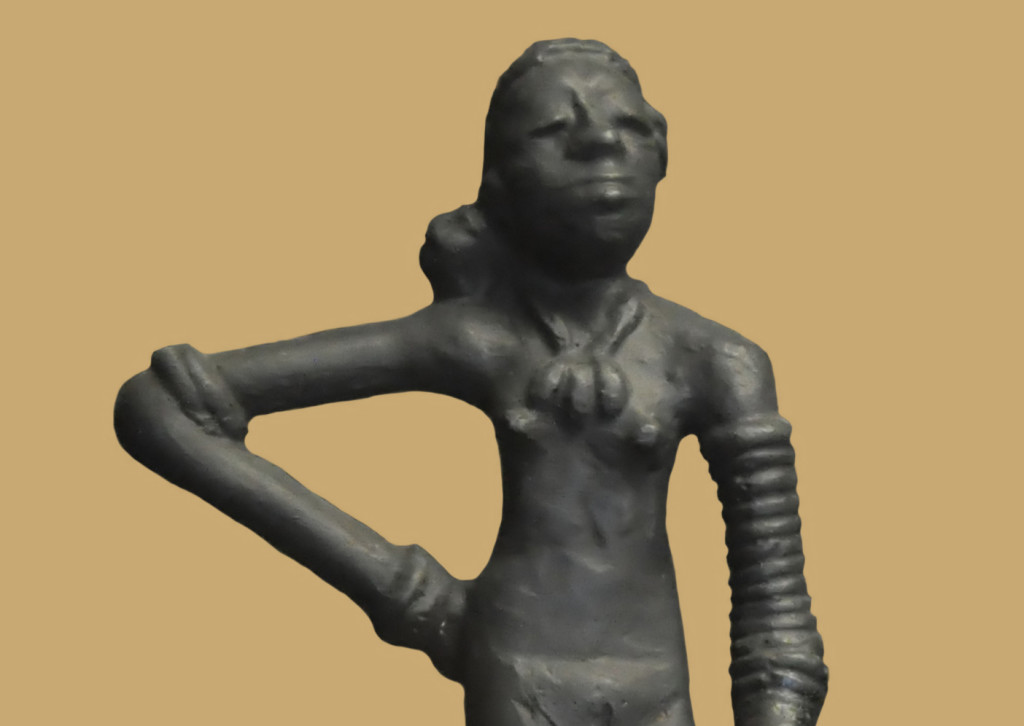In a bid to edit the reality according to the ruling ideology, Hindutva, a scholar has claimed that the famous ‘dancing girl’ of Mohenjodaro is actually an idol Goddess Parvati. The natural corollaries are: the people of Mohenjodaro and Harappa worshipped Shiva and, thus, it was a Hindu civilization. This is a pathetic endeavor to distort history—something the Hindu nationalists have learned from their ideological foes, the Leftists.
A research paper, titled ‘Vedic Sabhyata Ka Puratatva (Archaeology of Vedic Civilization)’, authored by Thakur Prasad Verma, a retired professor of Banaras Hindu University, has made this preposterous claim. Preposterous on several counts, the most important of them being the conspicuous differences between the iconic Mohenjodaro figurine and the other idols of Parvati.
The arguments offered by Verma appear to be specious. “The research paper goes on to say that several artifacts excavated from Mohenjodaro point to Shiva worship in those times,” says a news report in The Indian Express (December 26). “According to Verma, the famous ‘Seal 420’, a seal of a horned figure sitting in yogic posture and surrounded by animals, is strong evidence of Shiva worship. The identity of the figure in the seal has often been the subject of debates. While archaeologist John Marshall in 1931 saw a ‘prototype of Siva’ in this figure, historians have later differed with this interpretation and some have even suggested the figure is of a woman.”
Be that as it may, this seems to have given licence to Verma to draw unwarranted conclusions for Marshall’s remark: “the trefoil pattern seen on the shawl of the ‘Priest King,’ another iconic sculpture excavated from Mohenjodaro, is sign that the king was the follower of a Hindu god. The trefoil pattern, he says, resembles the Vilva or Bilva leaves that are used to worship Shiva today.”
Stretching the argument even further, Verma said that “where there is Shiva, there should be Shakti,” a manifestation of the Goddess. QED.
Evidently, causality is a big casualty. Quite apart from the audacious novelty—no historian or archaeologist has ever seen a goddess or divinity in the ‘dancing girl’—there is the problem of style. The greatest authority on ancient India, A.L. Basham, wrote in The Wonder That Was India that “this young woman has an air of lively pertness, quite unlike anything in the world of other ancient civilizations. Her thin boyish figure… indicate[s], incidentally, that the canons of female beauty among the Harappa people were very different from those of later India.” This is despite the fact “the earliest sculpture of historical times… shows a generic likeness to that of Harappa…”
This is reminiscent of the distortion of history in the fictional Oceania, a metaphor for Russia under Stalin, in George Orwell’s dystopian novel, 1984. One of the slogans of the ruling party is: “Who controls the past controls the future. Who controls the present controls the past.” Control of the past essentially means the presentation of history in such a manner that it furthers the cause of the establishment.
India has had its share of dystopian perversities. Left-leaning historians wrote textbooks whitewashing the sins of Islamic rulers and blaming ‘Hindu communalism’ for a lot of India’s problems. Now, Hindutva historians are peddling fabrications. With history persisting as the handmaiden of politics, the truth continues to be the biggest casualty.
